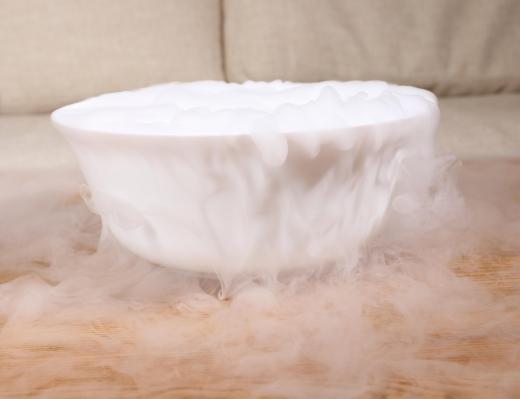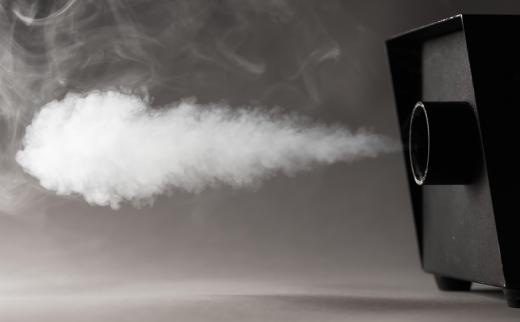What is Dry Ice?
 Michael Anissimov
Michael Anissimov
Dry ice is frozen carbon dioxide, the same stuff that animals exhale and plants need to perform photosynthesis. Because of its low temperature, -109.3°F (-78.5°C), dry ice is useful as a coolant. It is also relatively easy to make.
Scientists sometimes need just a small quantity of dry ice. This can be achieved merely by opening the valve of a tank of liquid carbon dioxide and putting a cloth bag over the discharge nozzle. A mixture of gaseous carbon dioxide and dry ice is produced when part of the escaping gas condenses on the cloth. This approach is the most straightforward way to produce a small amount of dry ice for laboratory use.

To produce larger quantities, evaporative cooling is necessary. First, liquefied carbon dioxide is produced by compressing carbon dioxide gas. Because the temperature of a substance increases as it is compressed, the gas must be cooled throughout the compression process to encourage the formation of a liquid. If the gas inside the vessel is roughly at room temperature, liquefaction begins to occur when the pressure is about 870 pounds per square inch (ppsi), or about 6,000 kilopascals.

The next step is pretty simple. In any given chunk of matter, there will be certain molecules moving very fast, and some moving much more slowly. Their average velocity is what we call the temperature. If a tub of liquid nitrogen is allowed to partially evaporate, the more energetic molecules will escape, causing the average momentum of the molecules in the mixture, and therefore its temperature, to decrease. After enough heat evaporates, the temperature of the liquid drops below freezing, a phase transition occurs, and we are left with solid carbon dioxide – dry ice.

Dry ice is usually stored in insulated containers. When exposed to air, it starts to immediately give off carbon dioxide gas, because the temperature difference between the ice and the environment is sufficiently large that it mostly skips the liquid phase and just turns into gas. Some carbon dioxide is turned into vapor, which is what gives it the appearance of fog. This substance is used all the time to produce artificial fog for performances. It can also be used in combination with laser light shows, scattering the light so that it can be easily seen.
AS FEATURED ON:
AS FEATURED ON:













Discussion Comments
Can you put dry ice in a refrigerator to keep milk and food cold?
i want to know what will happen to dry ice in a closed container which is kept at room temperature and given mild heat energy for some time. Naturally it will evaporate but if i stop heat energy later and the container is still at room temperature, will the dry ice form again and for how long will the cooling effect remain if i take 100 grams of dry ice?
Can dry ice can used to maintain cold chain during the transportation of drugs which are stored in temperatures between 2-8 degree Celsius? It is noted that some Pharmaceutical companies send this kind of drug by putting *dry ice* in the thermocol boxes.
There is a debate at my work, so I need your help in settling the matter. Storing dry ice in a walk-in cooler (say temp is between 30-40F) would the dry ice last longer compared to if it was left out at room temperature? Thanks.
you mentioned in your freeze-dry article that hitting dry ice with a hammer would make it quickly turn into gas. please explain
Post your comments